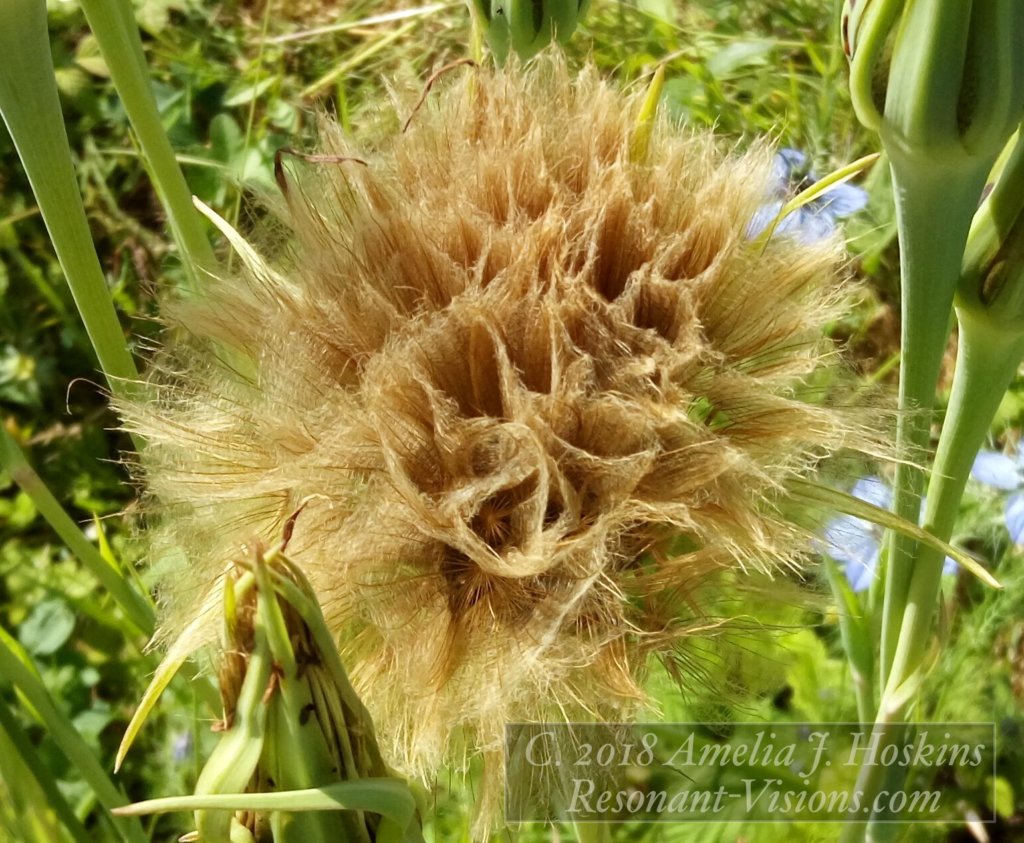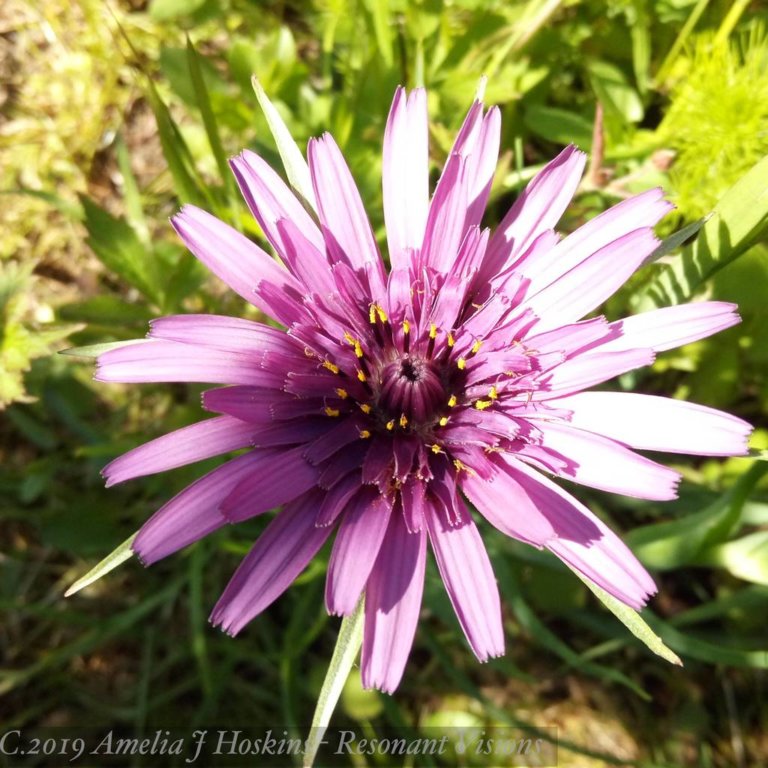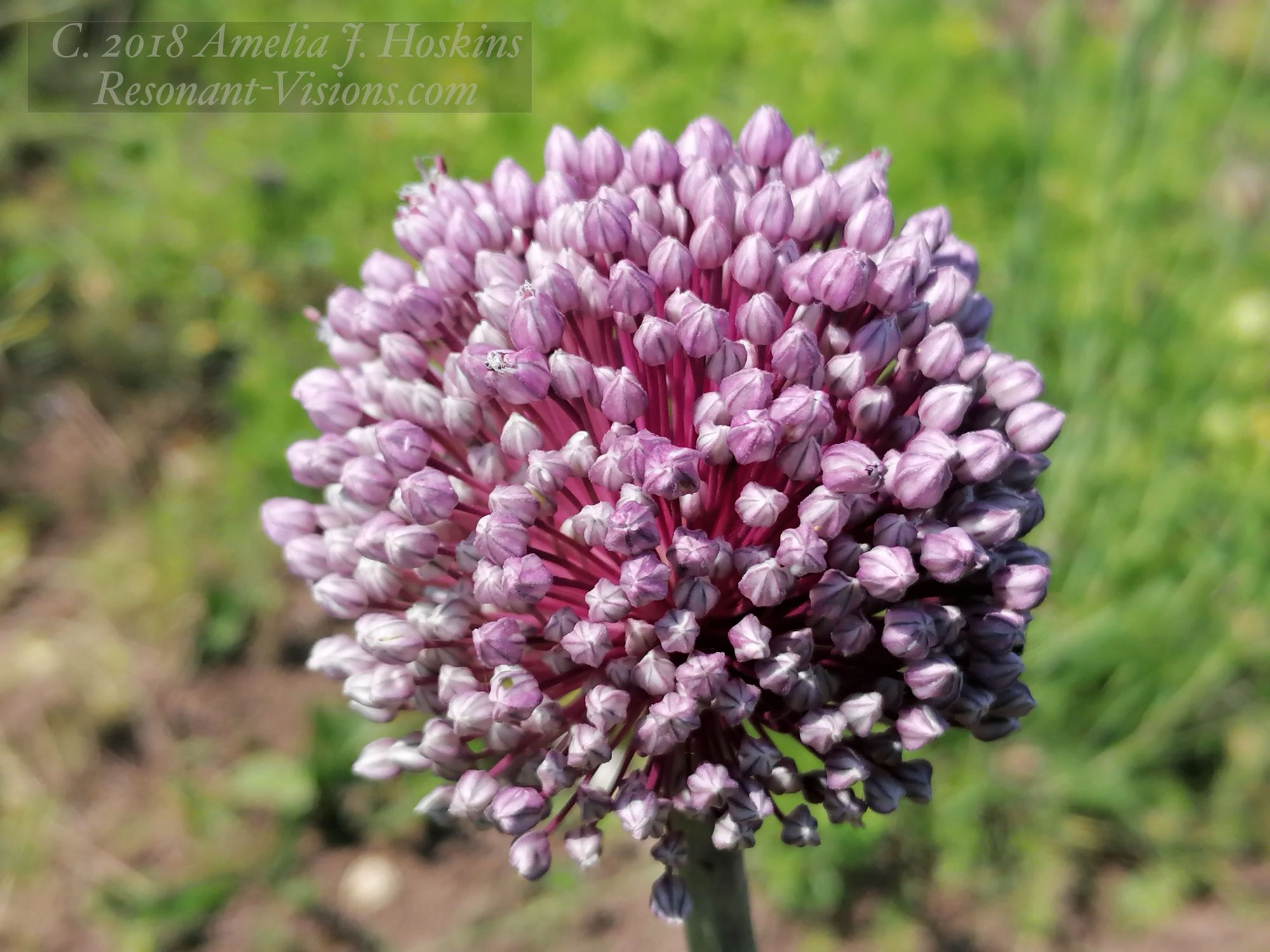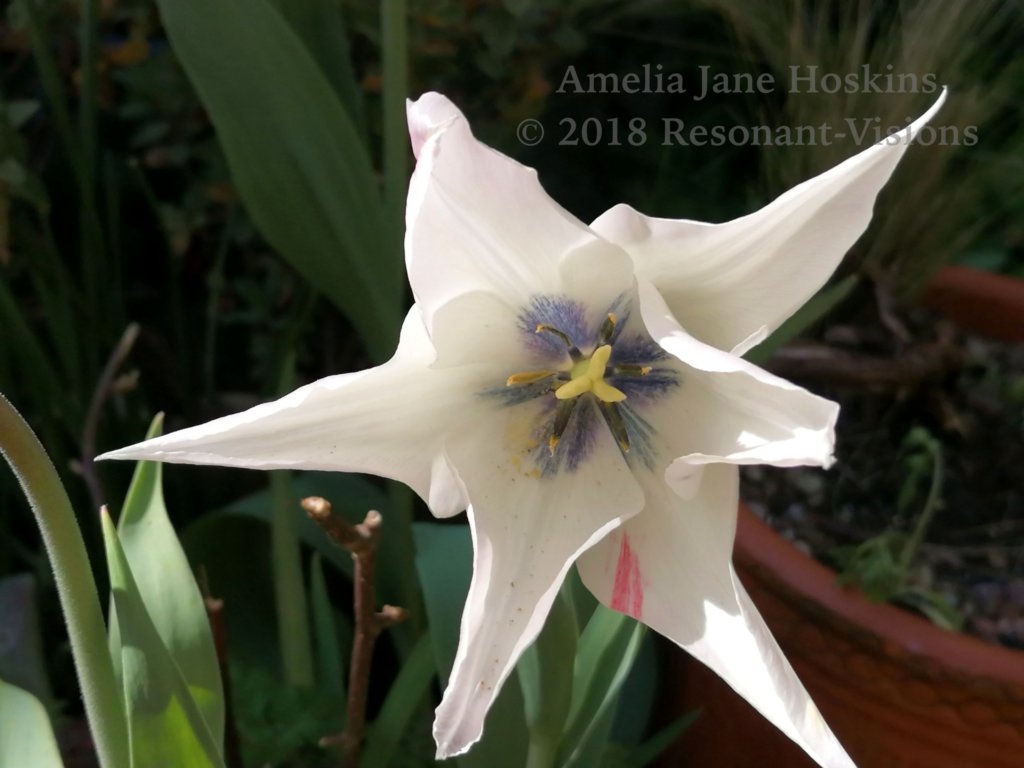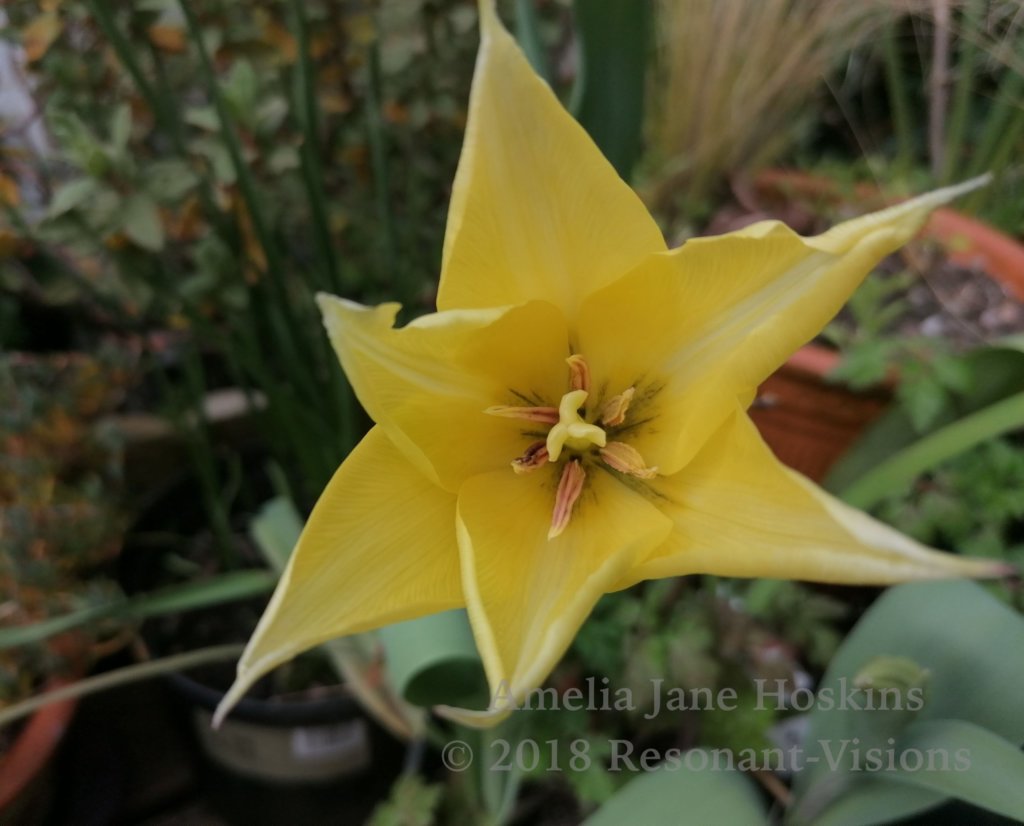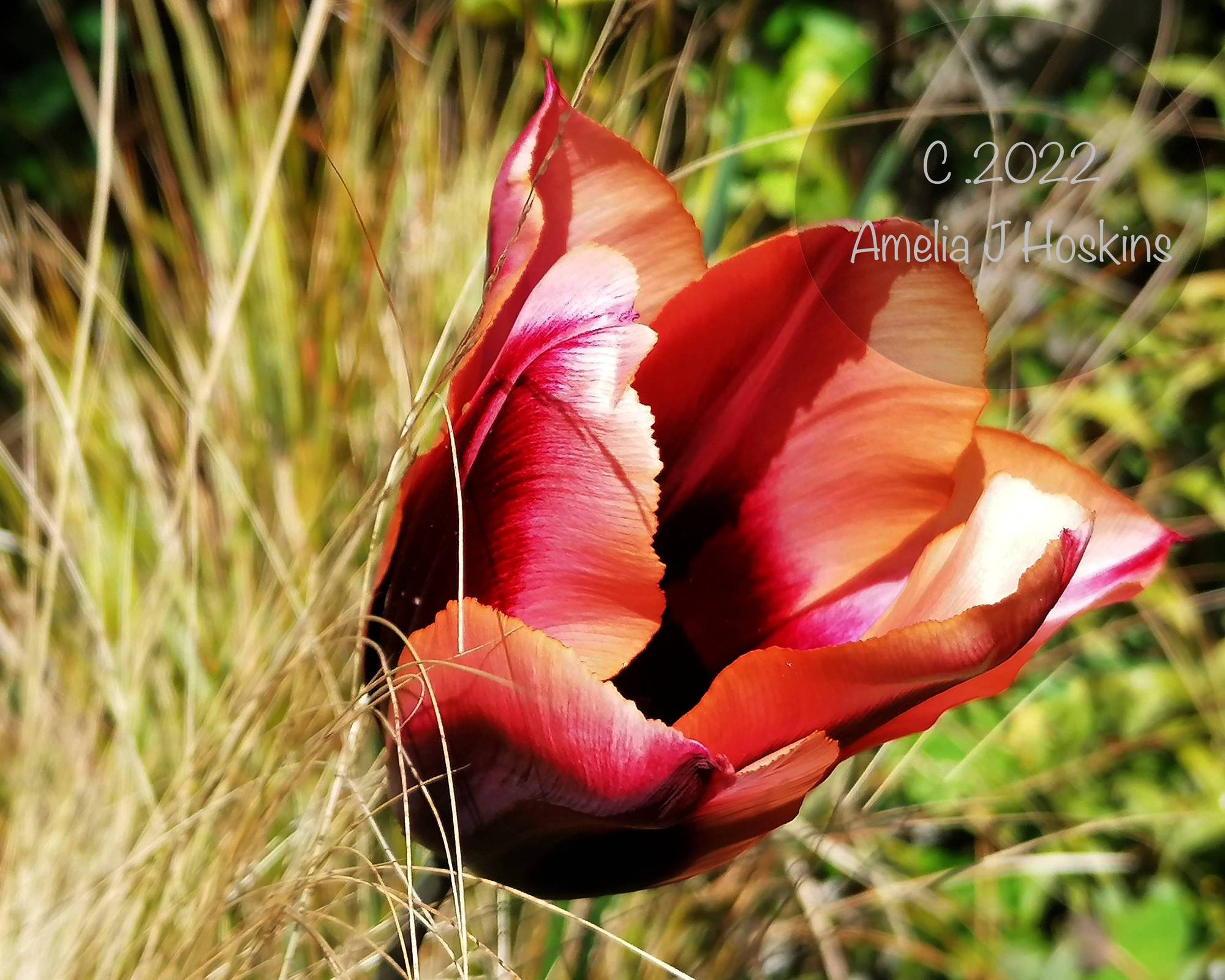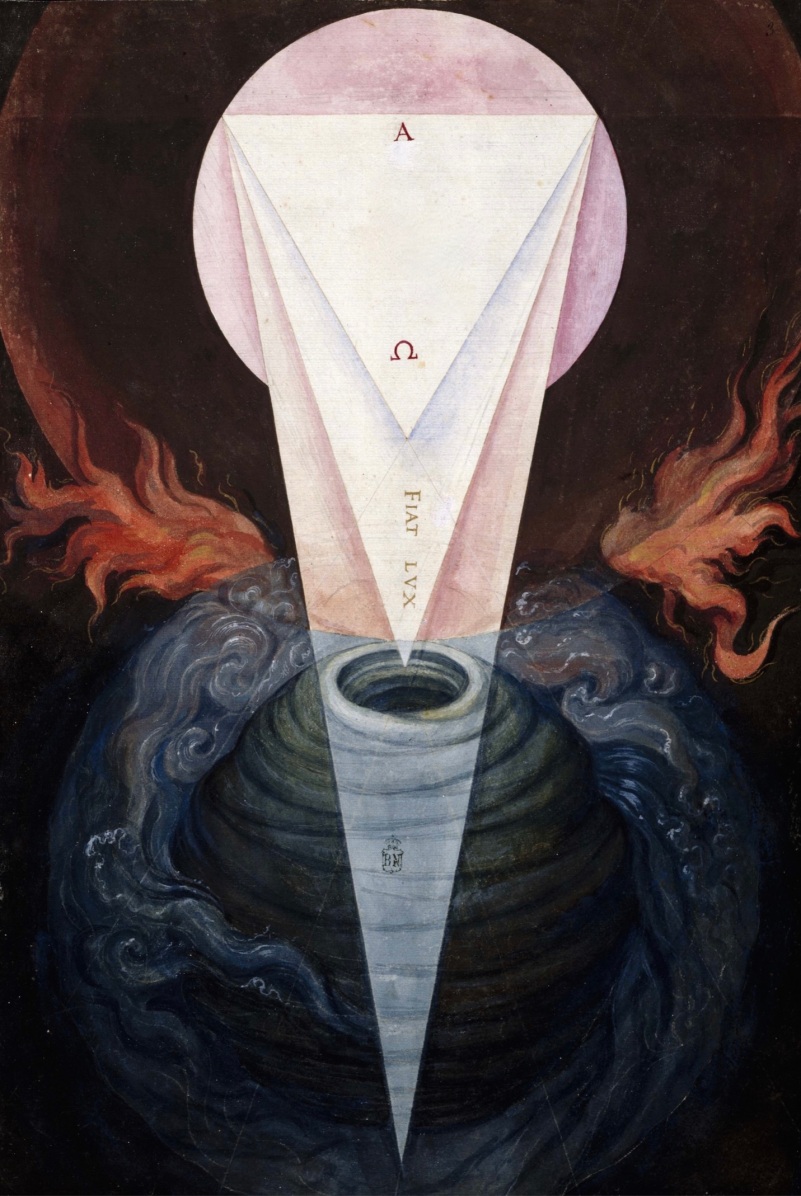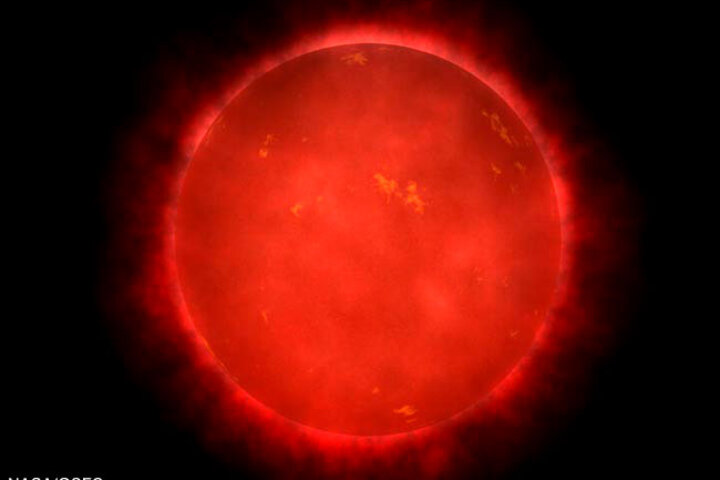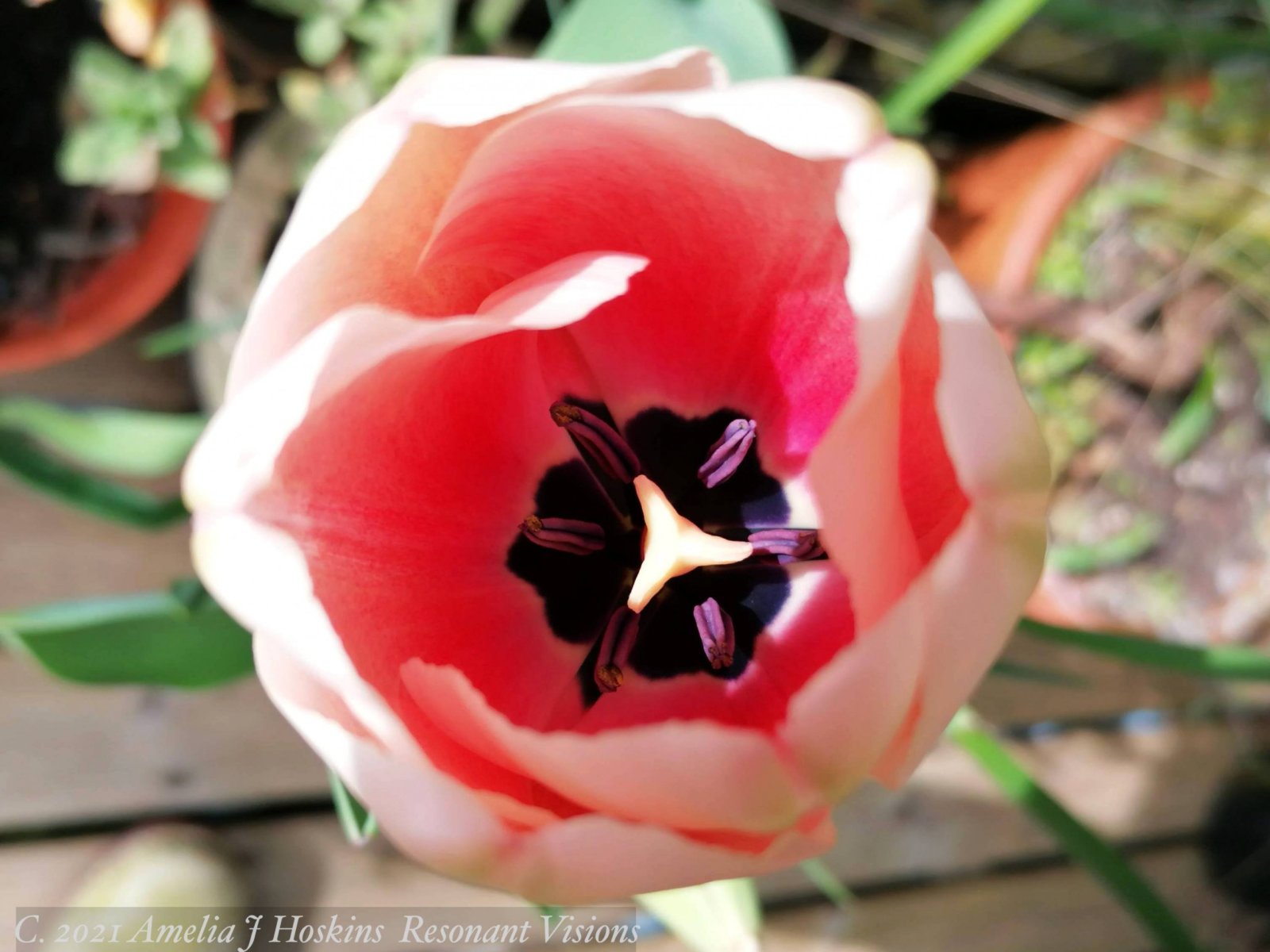Flowers - Seeds - Cosmos
Star shapes are one of the most common forms in nature; flowers and seeds. A developing seed pod stores light energy as a cosmic star does. 'As above so below'. Daisy type flowers under Aster = Greek 'star'.
Glorious purple-magenta Salsify flower, also in yellow. Genus: Tragopogon porrifolius, Sunflower family, asteraceae evolved 85m yrs ago. This is wonderful evolution and we can assume the plant is very 'wise'. Salsify flowers are time machines which close at 12:00 mid day, as they know exactly when the sun is past its zenith; hence the folk name 'John-go-to-bed-at-noon' . Bees love it. The triple rows of daisy type petals are perfectly formed. Each Salsify seed ( achene ) has a 'parachute' to ensure spread far and wide on the wind. Each a 'star form' within a globe of 'stars' creating one spherical star form. Parachutes touch each other which enables them to hold together, while the seed base is loosening from the hub. Once some go, then they all must follow.
[Author Note: To be linked to Salsify new reconstructed gallery]
Leek flowers - Allium flower forms in a tight pod, or spathe, which then bursts out as a star cluster with many more points than the ancient Salsify. Each tiny bud opens as a tiny star flower. White is common: this pink one with magenta stalks maybe ampeloprasum
Tulip Star Forms - Pointed 'Persian' varieties seen on persian carpet designs. This type of star comprises two rows of 3 petal sets which form triangles, like two triangles one inverted upside down over the other.
COMPARISON SIZES OF STARS - Unbelievable!
This video animation explores the cosmos stars, from our SUN up to Sirius, B-Centauri, Gacrux, blue hyper giant Pistol Star, yellow hyper giant RHO Cassiopeiae and unbelievable power of super-mega-gigantic red hyper giant Stephenson 2-18 (two thousands times bigger than the Sun).
